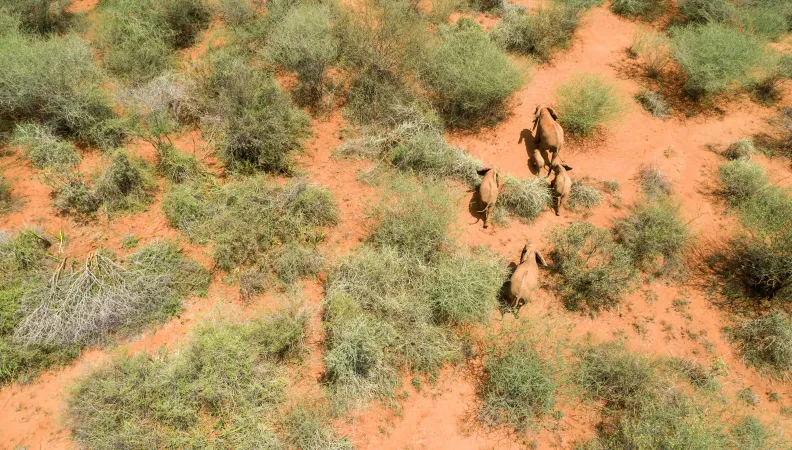Share the page
Conservancies working to preserve Kenyan biodiversity (NRT)
Project


-
Project start date
-
Status
In progress
-
Estimated date of project termination
-
-
Project financing date
-
-
Financing duration
-
5 YEARS
-
Type of program
-
FFEM
-
Global financing amount
-
€ 9338814
-
FFEM financing amount
-
€ 2000000
-
Project lead member institution(s)
-
AFD
-
Country and region
-
Kenya
-
Location
-
Marsabit & Isiolo counties
-
Type of financing
-
Beneficiaries
-
Northern Rangelands Company Limited (NRCL)


Kenya's biodiversity, amongst the richest in the world, is severely threatened by the loss or fragmentation of its natural habitats. To protect it, the FFEM is supporting the Northern Rangelands Trust in its community conservation activities in order to re-establish ecological connectivity between different kenyan ecosystems.
Context
Kenya’s efforts to preserve its exceptional wildlife are colliding head-on with the loss and significant fragmentation of natural habitats outside protected areas, while human-wildlife conflict escalates. This realization has since the beginning of the century led to the creation of further non-state protected areas known as conservancies, managed by the communities.
By supporting the main community conservation body, the Northern Rangelands Trust, the FFEM seeks to re-establish the ecological connectivity between Marsabit’s forest ecosystem in the north, the Meru National Park and the protected areas in the centre, particularly by restoring the ancient migration corridors of large mammals such as elephants and black rhino. To achieve this, the community conservancies model will be expanded and enhanced.
Description
The project has five components:
- Ensuring ecological continuity and protecting the ancient migration wildlife corridors between Marsabit and Meru-Samburu-Laikipia.
- Protecting wildlife and reducing human-wildlife conflicts.
- Restoring degraded habitats and sustainably managing the natural resources.
- Improving the living conditions of populations and reducing inter-community conflict.
- Focusing on capacity-building in coordination and management within the Northern Rangelands Trust.
Impacts
- Building institutional and financial capacities at three conservancies around Marsabit.
- Creating four new conservancies between the Meru National Park, the Shaba reserve and the Lorian wetlands
- Empowering women to take governance roles at the conservancies
- Improving functional understanding of the Lorian wetlands
- Adding new fundamental infrastructures (health, education) for the seven conservancies supported by the project
- Developing an economy among the communities bordering the seven conservancies and improving their resilience
- Securing the ecological corridors between Marsabit and Meru, particularly against poaching
Innovative and exemplary features
Dans le modèle des conservancies appuyé par le FFEM dans ce projet, les communautés sont les principaux acteurs de la conservation. Le développement local est corrélé à la préservation de la biodiversité, ce qui contribue à réduire les conflits homme-faune et à améliorer durablement les conditions de vie des populations. Cette innovation sociale et de gouvernance intègre une approche par l’écosystème qui remédie à l’isolement des aires protégées et sécurise dans leur ensemble les territoires vitaux des espèces. Déjà testée par le FFEM en Namibie, elle est reproductible dans d’autres pays. Un projet similaire est en cours d’instruction pour le Mozambique.
Sustainable Development Goals
ODD15 Life on land

ODD17 Partnerships for the goals



